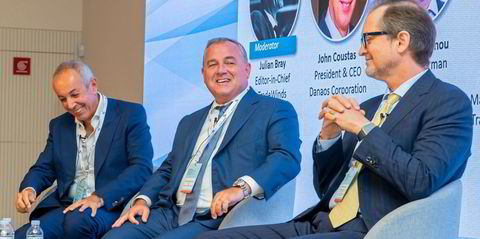Greek tanker owner Top Ships has signalled a change of tack away from dilutive stock issues to share buybacks.
Evangelos Pistiolis, The Nasdaq-listed company’s chief executive, said Top Ships is trading at 29% of its net asset value (NAV).
Top Ships added that the board is currently considering and reviewing the adoption of “shareholder-friendly measures”, potentially including a share buyback plan.
Earlier in 2023, the shipowner pledged it would not carry out further equity offerings to raise money for expansion for the rest of the year.
The company has been a frequent user of share issues to fund growth.
The stock closed up 2.23% at $18.08 in New York on Tuesday.
The price was as high as $126 in 2019.
The market cap is about $80m.
Top Ships has calculated the NAV at $344m, however, up from an estimate of $285m in June.
This translates into $74.36 per share.
The owner also said its revenue backlog is $400m following charter deals with Trafigura for two VLCCs.
Backlog beats debt
This is five times the 2022 revenue and nearly twice as much as its debt.
The Swiss trader took the 300,000-dwt Julius Caesar and Legio X Equestris (both built 2022) for up to five more years at a rate of $41,500 per day per vessel.
Top Ships said the firm period will be extended for about three years, with two additional years at the charterer’s option.
“Our time charters with high-quality customers have been generating positive cashflow and income for the past two years, and we expect that we will continue in the same way for 2023 and onwards,” the company said.
Top Ships has 87% fleet coverage in 2024, and 76% in 2025. This rises to 100% the following year.
Last week, Pistiolis and his family demonstrated their commitment to the company by lifting their stake to 73%.
He acquired more shares in the owner of two VLCCs, three suezmaxes and three MRs in open-market deals, as well as converting all the family’s Series E preferred shares.
Top Ships issued 2.9m shares as a result, giving the family 3.4m of the 4.6m shares outstanding.
The number of shares was reduced by a 12-to-one reverse stock split in September to regain compliance with the $1 minimum trading level required by the Nasdaq.





